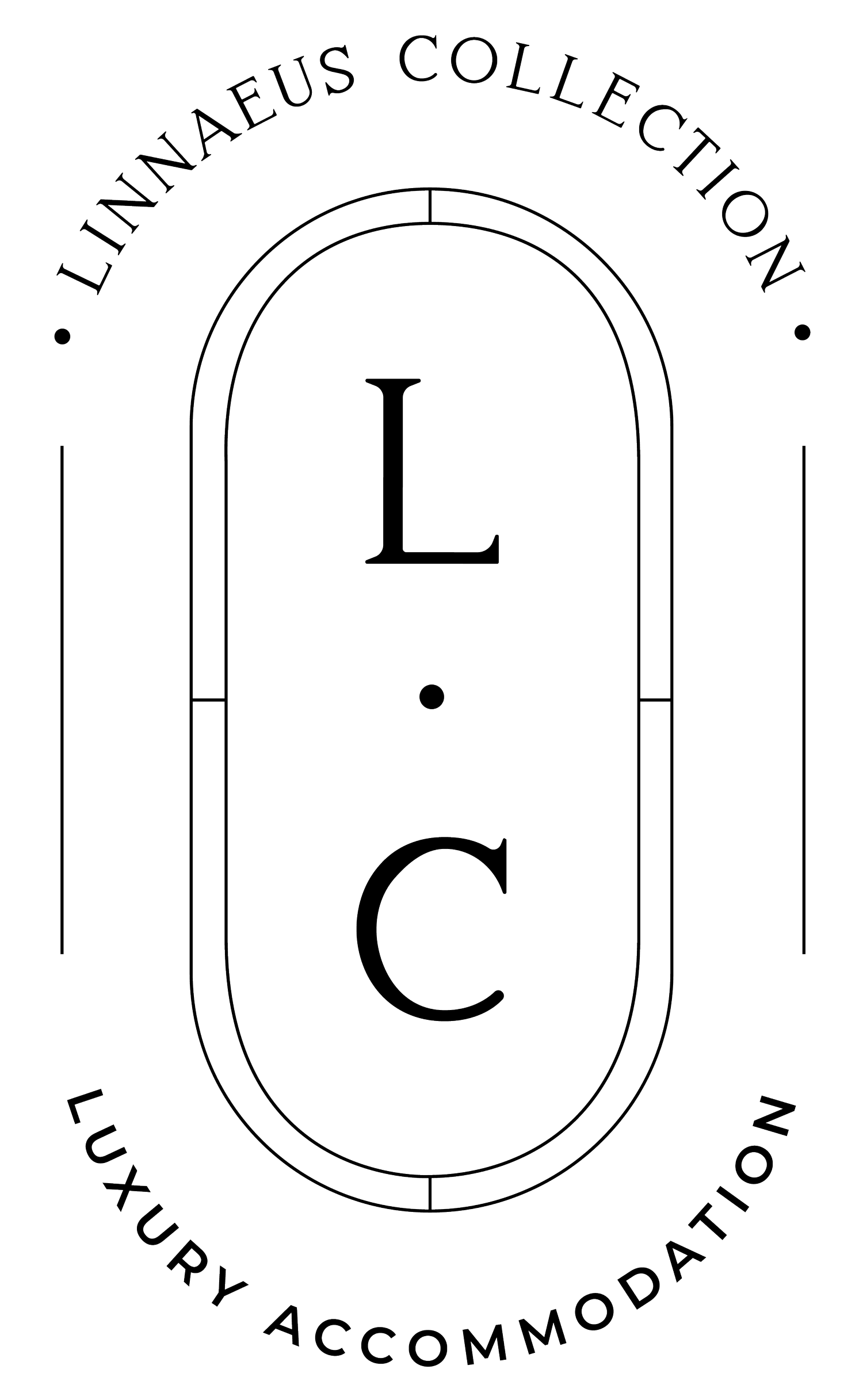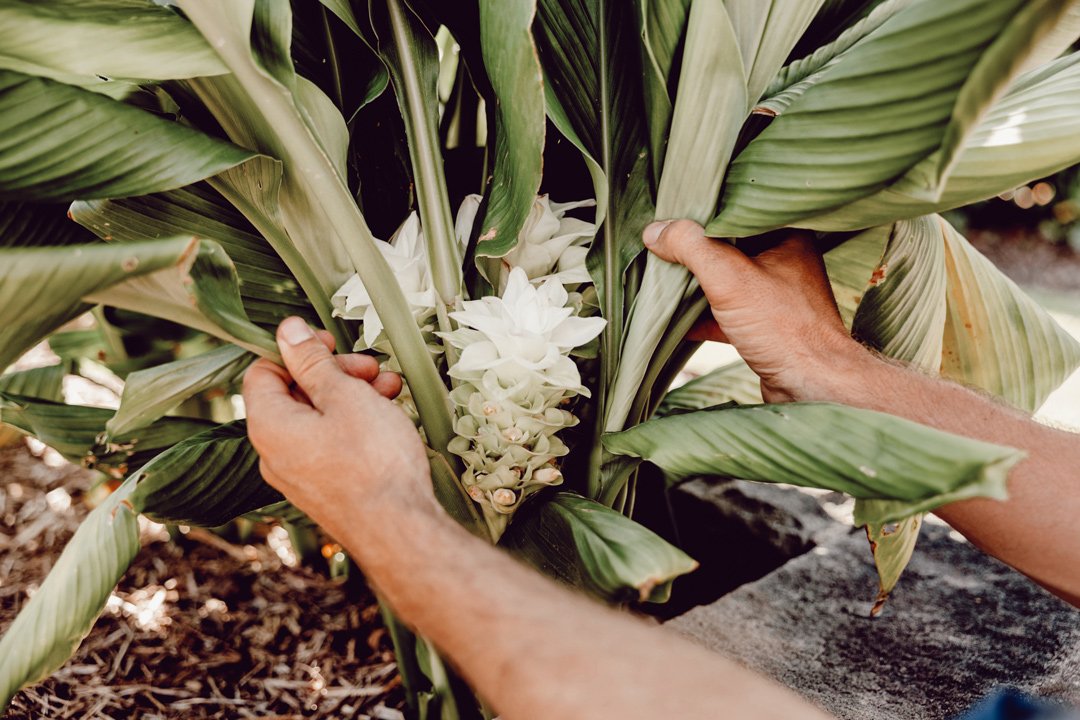Autumn Gardening Tips
from our resident horticulturist
Respecting the land that our properties sit on is at the core of what we do. It’s never been a ‘rip, tear, bust’ approach for us in anything we undertake. It's about taking time to truly appreciate what already existed before we start to put the signature Linnaeus Collection stamp on it.
Swedish botanist Carl Linnaeus was the inspiration for the name of our luxury holiday homes and also provided the ethos that we apply to each one of them. That is, that a focus on the physical environment which honours what already exists in nature, deeply nurtures the human soul. And nurturing the human soul is what Linnaeus Farm is all about whether it’s a holiday with a bunch of your besties or your entire family.
The landscapists
With 9 acres to play with, working with the right landscaper was critical to developing the property in a way that respects the Linnaeus ethos. It’s why we chose Tom Humphrey and the team at Landscapists for the concept, construction and care of this magical place. We thought you’d enjoy our chat with him, and it just might provide you with some useful tips too that you can bring to your own piece of paradise.
Meet Tom from Landscapists:
Respecting the land that our properties sit on is at the core of what we do. How did that influence what you created at Linnaeus?
The ridge on which Linnaeus sits had been almost completely denuded of its native vegetation by logging for a global red cedar market and then for pastoral farming.
When construction on the site began only 3 trees remained - the two amazing native figs and the Canary Island Date palm. While the formal parts of the garden do impose themselves on the landscape, the parklands and borders are being developed to settle and enhance the native landscape and its ecology. The new borders to the south are beginning to create a corridor of diverse, mostly native vegetation for wildlife.
Guests say Linnaeus Farm has a touch of magic, a soulfulness, a sense of calm and is a place that invites you to get back in touch with yourself and nature. How do you think your landscaping has helped deliver that special 'bit of magic'?
The landscape of Linnaeus Farm has been developed to engage with the greater landscape of the region. The site is on a ridge that pushes Broughton creek around it to the East and South with the main aspect of the landscape the dramatic rise of Cambewarra Mountain as the plains of Meroo Meadow roll up the escarpment to Beaumont and Bellawongarah to the North. In the South, the dramatic hills of Bamarang and Moreton National Park fade in layers to the horizon.
The formal Kitchen Garden and orchard are deliberately cut off from these views. The shelter of Jamie’s Barn and formal hedging buffers these spaces from the famous South Coast winds, allowing production of fine annual and perennial food crops for guests.
Beyond the formal gardens the pool landscape creates a luxurious place to enjoy the borrowed landscape of the Broughton Creek plains towards Jaspers Brush, as well as the rest of the parkland gardens the farm is developing.
The parkland trees surrounding the dam provide a useful stop for small birds to water in the shelter of nearby vegetation, and of course the reflection of the everchanging South Coast skies to the west create a picture within a picture. A real joy of the place.
And in the vege garden?
Autumn is a great harvest season at Linnaeus. Watermelons are approaching harvest, tomatoes continue to blush on the vine (if you can beat the Native Satin Bowerbirds to them) and leafy salad greens are abundant. There are fine, narrow Aubergines and Chillies abound in two varieties, both fairly hot. The ‘Birdseye’ is currently producing the hottest fruit, while the ‘firecracker’ belies its name to not be that hot yet. Both should be used with caution but would make for a great jam or garnish. Sweet potato is always available and the Tumeric awaits the first cold spell for the leaves to start dying back and will then be harvested for house use. There is a small selection of capsicum which could be used or taken off the vine to ripen. In the Orchard, there are bananas and we’ve planted another new dwarf plant this year for more variety. As well, the fruit set on the citrus looks fairly good for a winter harvest.
Are the veggie gardens/orchard at Linnaeus Farm organic? Can you tell us a little about
All inputs and management strategies in the edible production are organic. Managing pests on annual fruit and vegetables is a complex system which revolves around diversity. We include a great diversity of plant material in and around our production gardens for this purpose. We include regular foliar applications of natural liquid feeds to encourage robust and vigorous plants that can withstand the myriad of pests which enjoy the fruits of our labours as much as we do. Some systemic pest controls are required, and these are all of natural, and organically sound origins. And of course... hand weeding, lots of hand weeding.
Where's your favourite spot at Linnaeus Farm?
We are absolutely loving the development of the Pool Garden as the plants mature. We love to walk among the waving grasses and spires of flowers as they fade into autumn. We are also loving the southern border garden as it becomes a dense, complex, homage to an emerging native forest.
And a fave spot at Far Meadow Cottage?
We love the shade of the Oaks and Chinese Elm north of the kitchen.
Obviously gardening tips change between climate zones, but what are your hot tips for Autumn gardening?
This Autumn we are focussed on managing the water stress for our larger plants having moved from a prolonged wet period into a dry warm spell. We are planning to prep our winter annual beds of Brassicas and leafy greens so will look to incorporate some more nutrients into these beds ahead of this. We will be planning our winter pruning of the pool gardens and looking to refine our irrigation systems.
And your favourite trees?
The remnant fig trees are a joy to sit under and their odd shapes tell a story of their long eventful lives.
The Large Lebanese Cedar on the south side of the dam has finally settled in, having been moved here in about 2015. It will be a joy to behold for future generations.
Then there’s the cluster of Pin Oaks, west of the lower dam, which are also reaching a delightful age in their journey and I can imagine children enjoying their shade many generations from now.
Images by the Landscapists and Abbie Melle










